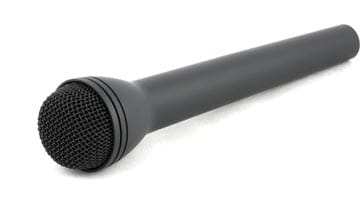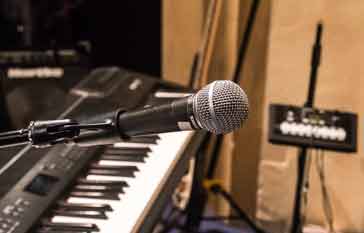Dynamic Microphone: Moving Coil Microphone
The dynamic microphone or moving coil microphone is widely used for stage, musical and other applications.
Microphone Tutorial Includes:
Microphone basics
Microphone types
Microphone specs
Microphone directionality
Dynamic microphone
Condenser microphone
Electret microphone
Ribbon microphone
Crystal / ceramic microphone
Boundary / PZM microphone
Carbon microphone
How to buy best microphone
Microphones for video
Microphones for vocals/ singing
The moving coil microphone or as it is more commonly called, the dynamic microphone is one of the most widely used forms of free standing microphones. It is widely used for vocals for musical performances as well as for many other applications.
The dynamic microphone is also simple in its design and as a result good microphones offer good value for money.

Dynamic microphone basics
The dynamic or moving coil microphone relies on the fact that if a wire held within a magnetic field is moved then an electric current is induced. This is the same effect as seen in an electric generator and many other items.
The dynamic microphone consists of a magnet, and a diaphragm to which a coil is attached. The assembly is held in place by an outer casing and the coil can move freely over the magnet.

As sound waves hit the diaphragm, this causes the coil to move backwards and forwards within the magnetic field and as a result an electric current is induced in line with the incoming sound vibrations.
Dynamic microphone features
The dynamic microphone has many advantages. It is very sturdy and can tolerate comparatively rough handling. Dynamic microphones are also able to handle high sound levels without distorting – this makes them useful for certain musical instruments.
Also they do not require an internal preamplifier like some types including the condenser microphone.
Whilst the response of the dynamic microphone is not bad, they often have a response peak around 2.5kHz or so. This is sometimes described in the marketing literature as a presence effect. It emphasises the ambient noise which tends to be around this frequency. It also gives what is often termed a bright tone to the audio and this is often liked in some situations where it enhances a musical instrument or lifts the vocals.
Another advantage of the response peak is that it can increase the intelligibility of speech under some circumstances, although it can make lisps or other similar affects worse.
In more expensive dynamic microphones the peak is well damped, although in less expensive models the peak can be quite significant.
The overall frequency response of these microphones is good, although the inertia caused by the coil can limit the top frequencies that can be handled..

Dynamic microphone summary
The dynamic microphone has many advantages and a summary of their key features is given below.
| Dynamic Microphone Key Features | |
|---|---|
| Feature | Details |
| Output impedance | Normally around 200Ω although 600Ω and sometimes even 50kΩ versions are seen. |
| Basic transducer impedance | Typically around 30Ω - transformers are used within the microphone to transform to desired impedance. |
| Typical frequency response | 40 – 15 000 Hz – often have a peak around 2.5 kHz. |
| Typical applications | Musical instruments, vocals for musical applications. |
| Durability | Robust microphone, especially when compared to other types as a result of few and simple working parts. |
 Written by Ian Poole .
Written by Ian Poole .
Experienced electronics engineer and author.
More Audio Video Topics:
HDMI
SCART
DisplayPort
DVI
Loudspeaker technology
Headphones & earphones
Bluetooth speakers
Stereo sound
Microphones
Audio compact cassettes
Vinyl record technology
Digital radio
DVB television
Return to Audio / Video menu . . .



